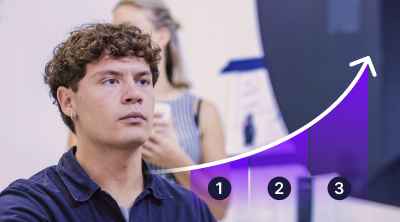How AI Co-Pilot Tools Increase Efficiency and Accuracy in eComm Content Production
As we all know, content production in the eCommerce world is continuously evolving. With the onset of advanced tools and applications, the task of creating high-quality, error-free content is becoming seamless and efficient. One such tool that has the potential to significantly transform the content production landscape is the "co-pilot" tool.
This blog post was written in collaboration with dreem.ai - sign up now for early access!
Recently, we’ve been diving into Artificial Intelligence (AI) with our new development concept, dreem.ai. Our last piece discussed AI Data Collection and Validation and today, we’re continuing the conversation even further.
What is a Co-Pilot Tool?
A co-pilot tool uses user inputs, machine learning, and automation to facilitate smoother operations. For instance, with Creative Force's sample management tool, you could merely ask an AI assistant, perhaps endearingly named Clippy, to locate a sample for you. The assistant would then comb through the logs, looking at the information provided by the team, and then provide an educated guess as to the sample's whereabouts and simplify your entire search process.
It’s important to remember that tools like this need to have information and guidelines to work efficiently, but when they do, they can do wonders.
The Rise of The Co-Pilot Tool
The co-pilot tool is rapidly becoming an important piece of content production. It is expected to be integrated into various platforms around the world, including Adobe, Pixelz, Capture One, and Creative Force. Its primary role lies in its capability to catch discrepancies, like an image of a blue shirt labeled as red. Moreover, it allows users to self-trigger various tasks, creating an interface that enhances the user experience. This goes back to having the information input to the platform to use for triggers.
When thinking about a co-pilot tool and integrating AI and machine learning, Creative Force CTO Tejs Rasmussen says, “It's always about providing value. We are not here for the gimmicks and the wow effect. It's more like, ‘Hey, help me out. I'm in this situation right now. It's taking things that we know that customers are doing today in a relatively manual way, and then just making that faster, which is kind of the core mission of Creative Force.’ When implementing new tech like this, think about how it’s being used. It’s less important to use the tech than it is to use the tech that truly helps your users.“
Personalizing the Content Selection Process
With the co-pilot tool, content production could reach new levels of customization and precision. One such aspect lies in the selection process, particularly for the main shot that appears on a main catalog page within a category.
By leveraging computer vision, the co-pilot tool could suggest selections that are either similar or dissimilar to other selections, based on your preference. It could even suggest the ideal main shot for a product, ensuring a diverse and balanced representation of products in a category.
The co-pilot tool could be instrumental in planning production processes based on various data, optimizing resources, and enhancing efficiency. By automating these processes, teams can focus on more intricate and creative tasks, enhancing the quality of the content produced.

Streamlining the Retouching Process
The application of the co-pilot tool extends to the retouching process as well. It could potentially suggest retouching notes based on the image and then feeding those notes directly into Photoshop. This paves the way for what we might call "predictive retouching" – an AI-based assessment of how an image might be retouched based on prior actions.
If you’ve been watching the recent Photoshop news, you know that Adobe has released a generative fill feature that automatically matches perspective, lighting, style, and more, to edit photos in all new ways. In the future, text prompts could be included to remove backgrounds, change colors, and more with just a few clicks.
These exciting features could revolutionize retouching by automating the mundane parts of the process, allowing retouchers to focus on more nuanced and detail-oriented tasks.
Generating Style Guides
The co-pilot tool's capabilities also extend to generating style guides. Through AI, it might be possible to reverse engineer a style guide based on a selection of images, or even look at an existing website to derive the style guide from it. This could dramatically streamline the process of creating and maintaining style guides, especially for new customers transitioning to Creative Force.
Daniel Jester, Chief Evangelist at Creative Force, paints a picture that, “One of the big heavy lifts of taking on Creative Force is taking all your style guides. They probably live in SharePoint, maybe it's a printed PDF (underneath somebody's workstation), wherever that style guide lives today. If you could say, ‘Just look at my website and derive the style guide based on categories from that,’ that would be huge.”
And with co-pilot tools, that’s where we’re headed.
Wrap-Up
The potential for AI technology to revolutionize eCommerce content production is enormous. However, it's important to ensure that these advancements respect creators' copyright and customer privacy. As we navigate this new era of eCommerce content production, we look forward to seeing how these tools evolve to meet the changing demands and challenges of the industry.
Keep an eye out for the next piece in the series, focused on 3D technology, AI, and efficiency in eCommerce.










